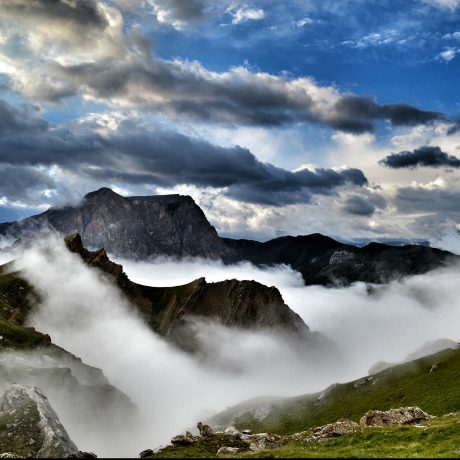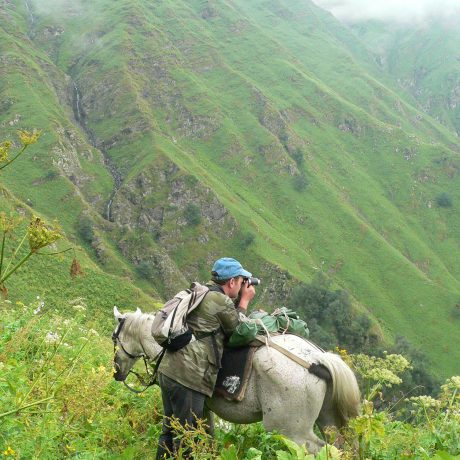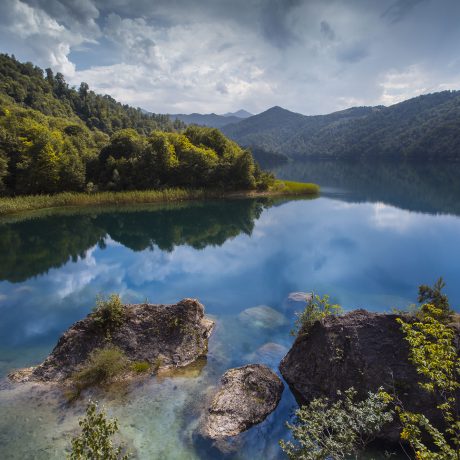Azerbaijan has a significant Ecotourism potential. It's a great destination for people who want to view the full potential of Caucasus nature.
Forests cover 12% of the territory of Azerbaijan. The country prides itself on 10 national parks, 13 state reserves, and 19 special state nature reserves.
Tourists often visit foreign countries for the love of their traditional cuisine. Azerbaijan is no exception. Ecotourists love the local food for its use of vegetables and greens. However, meat is an integral part of the national cuisine. So if you love mutton and beef, chicken or fish, Azerbaijan can be a perfect destination for you.
And don't forget about the widely-known Plov - a saffron rice dish of Azerbaijan. Other popular dishes are bozbash (lamb soup with different vegetables), dolma (meat wrapped in cabbage or grape leaves), gutab (fried lavash filled with greens or minced meat), and many others. You might also find it interesting that a national beverage in Azerbaijan is locally-cultivated black tea. And the traditional armudu (pear-shaped) glass screams Caucasian nature.
And if that's not enough, you can relive Azerbaijan's history in the Old City of Baku. Tourists often go to The Maiden Tower and The Palace of the Shirvanshahs built in the 11th–12th centuries. Visitors are also fascinated by the Historic Centre of Sheki with the Khan's Palace dated to the end of the 18th century, which are UNESCO World Heritage Sites. And last but not least, you can visit the largest winter resort - Shahdag Mountain Resort in Azerbaijan.
Learn about Azerbaijan’s geographic characteristics
To the west of the Caspian Sea, you can observe a beautiful country - Azerbaijan.
Borders:
- Georgia
- Russia
- Iran
- Turkey
- Armenia
Territory:
- Total land area - 86,600 square kilometers
- 40% of its territory consists of three mountain ranges, the Greater and Lesser Caucasus and the Talysh Mountains
- 40% of the territory is shared by the Kura-Aras Lowland
- The altitude of relief varies from –26 m (Caspian coasts) to 4,466 m (Mount Bazarduzu) in altitude.
- 27% of the territory has an altitude of 1000 m above sea level.
- A high concentration of mud volcanoes: of about 2000 mud volcanoes on Earth, 344 are located in the east of Azerbaijan.
Climate in Azerbaijan
The climate in Azerbaijan varies from subtropical and humid to subtropical and dry. Most of the country’s territory has a dry subtropical climate, especially in the central and eastern parts.
Winter is mild in the lowlands but colder and snowy in higher mountain areas of the Greater and Lesser Caucasus. Summer is warmer in the lowlands.
In the Kura-Aras plain and the Absheron area, the average annual temperature is 14–15°C. The temperature is 4–5°C at 2,000 meters and 1–2°C at 3,000 meters in altitude.
Population of Azerbaijan
Ten million people live in Azerbaijan, and most of them populate the cities.
- The population of Azerbaijan - 10 million people
- The population of the capital of Azerbaijan, Baku - 4.5 million people
- About 45% of the Azerbaijani population lives on the Absheron Peninsula
- 91% of the population is Azerbaijani by nationality
People of Azerbaijan prefer lowlands. The number of settlements and density declines towards the uplands.
Besides Baku, other large cities such as Ganja, and Sumgait, populate more than 300 thousand residents. Most local people are Azerbaijani, but ethnic groups coexist with them and speak their native language daily.





